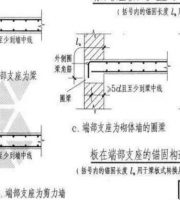The main hazards are: fire, explosion and poisoning.
The main hazards are: collapse and falling from height.
If you are fooled, our legal team will escort you free of charge, please rest assured to apply for a job! 1、 The common identification methods of major hazard sources in construction site are empirical analysis method, which includes comparison analysis method and analogy analysis method.
After the hazard source is determined, establish and improve various rules and regulations on the basis of systematic hazard analysis of hazard sources, including post safety production responsibility system, detailed rules for the implementation of key hazard source control, safe operation procedures, operator training and assessment system, daily management system Shift handover system, inspection system, information feedback system, hazardous operation approval system, emergency measures for abnormal conditions, assessment, reward and punishment system, etc..
2.10 temporary migrant workers’ dormitories, fences, temporary migrant workers’ dormitories on construction sites and fences are unstable, resulting in collapse, collapse accidents and major fires in temporary migrant workers’ dormitories.
2.4 hoisting machinery for hoisting machinery assembly and disassembly engineering mainly refers to material hoist, dual-purpose construction elevator and tower crane.
Including construction scheme, edge protection, pit wall support, drainage measures, pit side load, upper and lower channels, earth excavation, deformation monitoring of foundation pit support, working environment, etc.
3.1 basic principles of major hazard source control 3.1.1 elimination priority principle first consider eliminating hazard sources as fundamentally as possible through reasonable design and scientific management to achieve intrinsic safety.
[if you have a boss around you who wants to recruit technicians from the project department, please forward our applet to him! Every small move will change a life] the recruitment applet of the project department will review every recruitment information.
When the value of D exceeds the unacceptable or unacceptable risk, it is recognized as a major hazard source.
2、 Common types of major hazard sources on the construction site major hazard sources on the construction site are generally identified according to the type and location of the accident.
Production conditions can also create hazards or exacerbate the hazardous properties of materials in the production process.
The main hazard is falling from height.
3.2 major hazard source control measures 3.2.1 management measures 3.2.1.1 establish and improve rules and regulations for hazard source management.
Such as wearing special labor protection articles.
The main hazards include collapse, falling from height and lifting injury.
1.
2.5 temporary power for construction temporary power for construction includes external power protection, grounding and neutral protection system, distribution line, distribution box, switch box, on-site lighting, electrical equipment, power transformation and distribution device and other safety protection (such as electric leakage, insulation, grounding protection, one machine and one switch), resulting in personnel electric shock, local fire and other accidents.
2.7 hanging operation hanging operation mainly refers to the external wall coating operation of hanging basket.
Such as using harmless process technology, replacing harmful substances with harmless substances in production, realizing automation, remote control technology, etc.
2.8 manual hole digging pile manual hole digging pile causes personnel suffocation or gas poisoning due to poor ventilation and exhaust in the hole, or the hole wall collapses and buries the construction personnel.
Other major hazard sources include poisoning, explosion, fire, etc.
2.2 superelevation span formwork support works superelevation, overweight and long-span formwork support works refer to formwork support works with a height of more than 8m, a span of more than 18m, a total construction load of more than 10kN / m2, or a concentrated line load of more than 15kn / m.
2.9 the inflammable and explosive chemicals used in warehouse and canteen construction are temporarily stored or used improperly, and the protection is not in place, resulting in fire or personnel poisoning accidents; Collective poisoning or disease caused by unsanitary diet on the construction site.
3.1.3 personal protection principle when the safety and health of operators cannot be fully guaranteed after taking risk elimination or reduction measures, personal protection equipment shall be considered as a supplementary countermeasure.
“Five temporary edges” refer to the periphery of foundation pit, balcony without handrail or breast board, the periphery of material platform and cantilever platform, the edge of canopy and cantilever eaves, the periphery of roof and floor without external scaffold, and the periphery of water tank and water tower.
The risk score of operating conditions is represented by the symbol D, d = L * e * C.
Operation condition risk assessment method the operation condition risk assessment method considers that the three main factors affecting the risk are: the possibility of accident, represented by the symbol L; The frequency of human exposure to hazardous environment is represented by symbol E; The possible consequences of an accident are represented by symbol C.
The main hazards are: electric shock and fire.
Eliminate unsafe factors in the construction process with low cost and high efficiency to ensure construction safety.
According to the location of the accident 2.1 deep foundation pit engineering construction deep foundation pit refers to the trench with excavation depth of more than 1.5m and the foundation pit with excavation depth of more than 5m, or the foundation pit with excavation depth of less than 5m but with important buildings (structures), houses or pipelines requiring strict protection within the influence range of foundation pit excavation.
3、 Major hazard source control at construction site is based on major hazard source identification and risk evaluation, preparing scientific hazard source management scheme, pre controlling the possible risks in each link of construction, ensuring that the main energy of safety managers is invested in high-risk places, so as to achieve the purpose of risk control.
The main hazards are: falling from height and object strike.
The disadvantage is that it is easily limited by the experience and knowledge of analysts.
3.1.2 risk reduction principle: if the hazard source cannot be fundamentally eliminated, risk reduction shall be considered next.
The greater the value of D, the greater the risk.
It is not difficult to find out the risk factors by summarizing the previous production experience and analyzing the causes of previous accidents or near misses.
Including construction scheme, support system, column stability, construction load, formwork storage, formwork erection and dismantling, formwork acceptance, concrete strength, transportation road and working environment, etc.
For “four openings” and “five edges” working faces with a height of more than 2m, accidents such as personnel stepping, slipping and instability are caused due to non-compliance of safety protection facilities or lack of protection facilities, personnel not equipped with protective ropes (belts).
The analogy analysis method is to use the experience of the same or similar projects or operating conditions and the statistical data of labor safety and health to analogy and analyze the risk factors of the evaluation object.
Take technical and management measures to reduce the probability or potential severity of injury or damage.
The main hazards are collapse and poisoning.
The main hazards are: collapse and falling from height.
2.3 scaffold engineering scaffold engineering includes: setting up floor type scaffold with a height of more than 20m; Cantilever scaffold; Scaffold with height above 6.5m and uniform load greater than 3kn / m2; Attached integral lifting scaffold.
The main hazards are collapse and fire.
The comparative analysis method is a method to intuitively analyze the risk factors of the evaluation object by referring to relevant laws and regulations, standards, checklists or relying on the observation ability of analysts with the help of experience and judgment ability.
According to the type of accident, the accident type is mainly “five major injuries”.
For this, the method of safety checklist can be used to make up for it.
2.
Falling from height, electric shock, construction collapse, object strike and machine injury.
These five types of accidents are the most likely to cause mass casualties and are common major hazard sources on the construction site.
The number of “five major injuries” accidents accounts for 90% of the total number of accidents.
Analysis method of material properties and production conditions understanding the properties of materials produced or used is the basis of hazard identification.
The main hazards are: collapse and falling from height.
The hazard sources on the construction site are mainly identified by empirical analysis.
Including installation, jacking, hoisting and demolition.
2.6 “four entrances”, “five edges” and “four entrances” refer to crossings, reserved openings, stair entrances and elevator wellhead.
The commonly used material properties in hazard identification include toxicity, physicochemical properties, combustion and explosion characteristics, etc.



